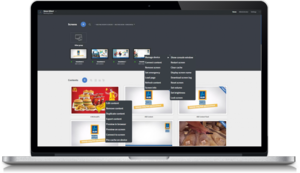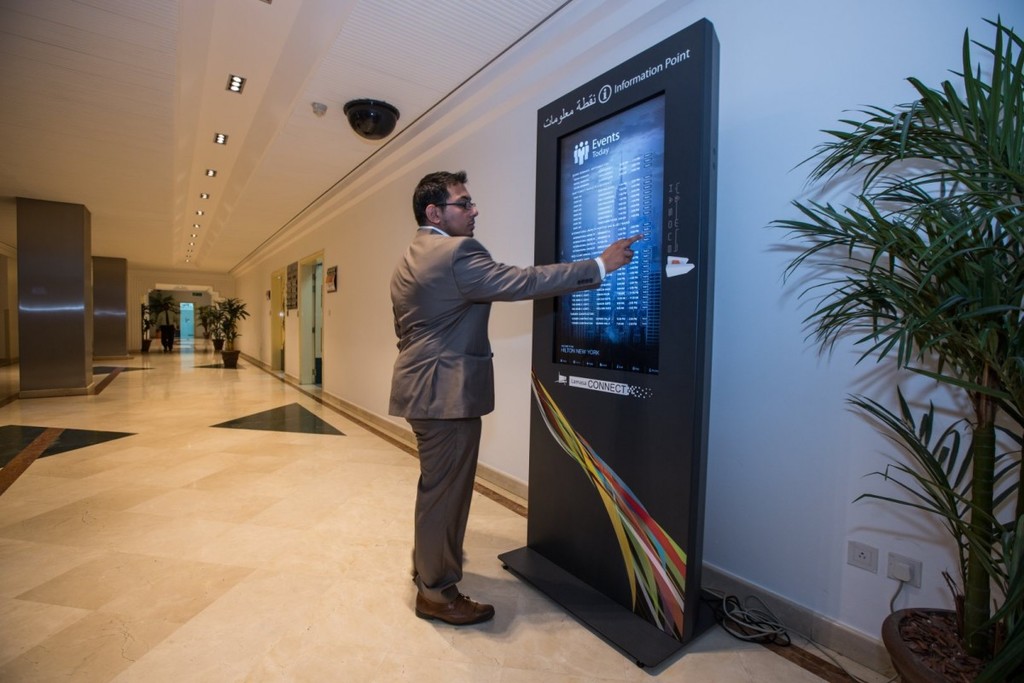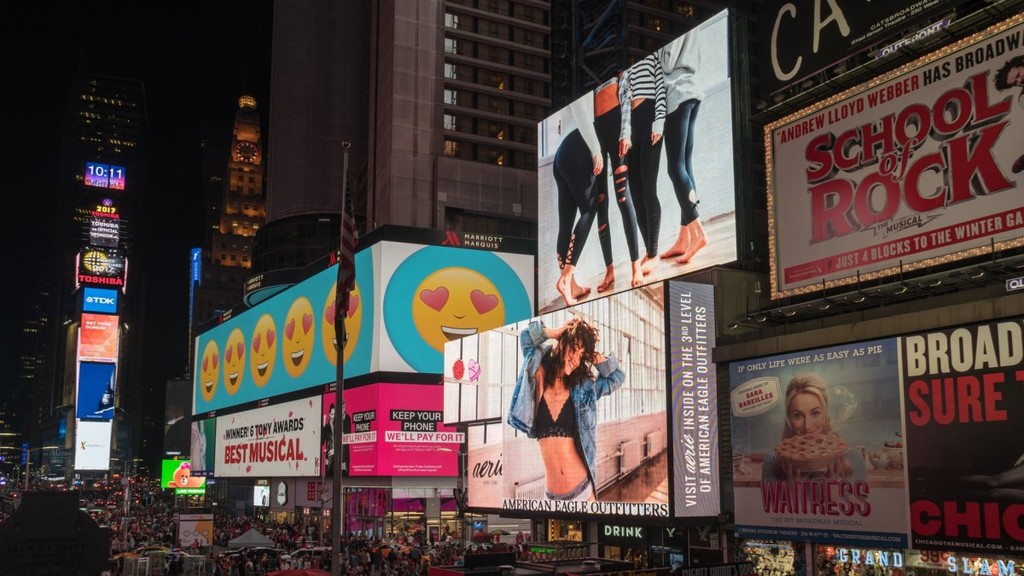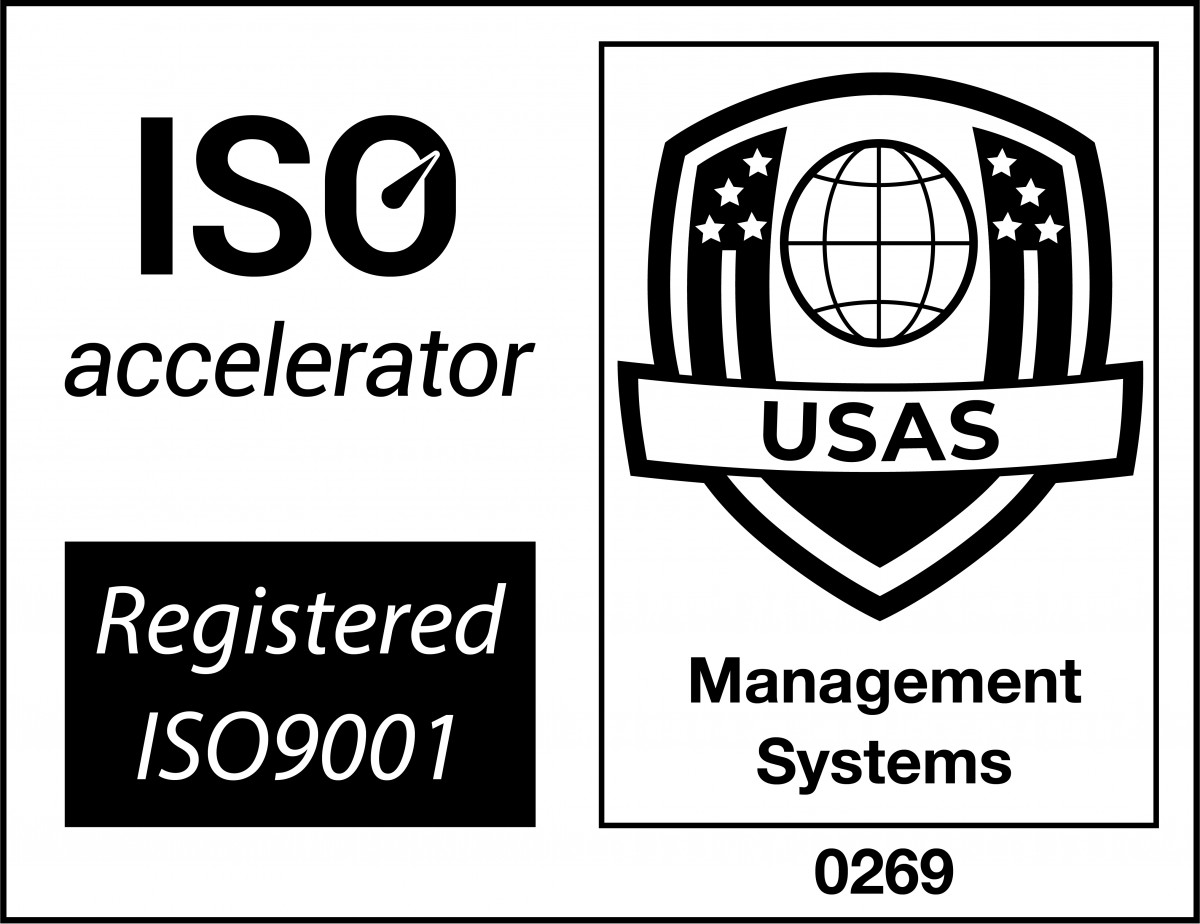Yep, that’s another decade over. Didn’t seem to last long, did it?
It may have flown by, but a lot changed over the last 10 years. Here are seven digital signage innovations from the past decade.
1. Easy updates
 At the start of the decade, many digital displays didn’t have an online dashboard for managing the content. The content was often loaded in via a USB, making it hard to make changes which would result in stale content. Fast forward to 2020 and most good digital signage solutions will provide a CMS allowing users to quickly and easily manage their displays, keeping the signage as fresh and up to date as possible without having to rely on IT and design teams. This means we can say goodbye to unconventional methods of updating digital signage, such as this food court vendor in Winnipeg who had to resort to sticking pieces of paper on their screens to update the pricing. We can only assume the team on the ground didn’t have access to make changes. Hopefully, this is an obstacle that we can now leave in the previous decade!
At the start of the decade, many digital displays didn’t have an online dashboard for managing the content. The content was often loaded in via a USB, making it hard to make changes which would result in stale content. Fast forward to 2020 and most good digital signage solutions will provide a CMS allowing users to quickly and easily manage their displays, keeping the signage as fresh and up to date as possible without having to rely on IT and design teams. This means we can say goodbye to unconventional methods of updating digital signage, such as this food court vendor in Winnipeg who had to resort to sticking pieces of paper on their screens to update the pricing. We can only assume the team on the ground didn’t have access to make changes. Hopefully, this is an obstacle that we can now leave in the previous decade!
2. Interactive content
Touch screens have surged this past decade. It seems crazy to think of a world without touch screens, but they were still fairly new in 2010. Many people were still using phones with physical keyboards, and the iPad wouldn’t come out until March 2010. Now we expect to be able to touch everything and digital signage is no exception. You can touch, drag and drop your way through interactive touch screen displays. From scrolling through news feeds to zooming out on an interactive map, touch is here to stay and is arguably one of the most important digital signage innovations.

3. Price
Inflation may be causing most prices to rise (UK favourite candy bar, the Freddo, started 2010 at 15p and soared as high as 30p over the course of the decade), but digital signage is actually the opposite. As technology progresses, manufacturing costs come down meaning that the digital displays are now being sold for cheaper than ever before. This is the same reason why TVs seem to get bigger and cheaper every year.
4. Tracking
At the start of the decade, gauging just how effective your digital signage was could be tricky. Now, however, it’s not only possible to track the footfall going past your digital signage, but you can also track the how many people have looked at your signage, their approximate age and gender, and even their mood! While the average consumer may find this slightly creepy, it’s a godsend for marketers as you can now get an accurate idea of how effective your campaigns are, and even tailor your campaigns to the people passing by. With digital signage innovations like this the future feels ever closer, did Spielberg get it right with Minority Report?

5. Data integration
The software behind digital signage has got smarter than ever this past decade. It’s now possible to integrate data sources like Google Sheets, allowing you to display dynamic, powerful data. This can be useful in a range of circumstances. From offices who want to display their targets and performance data to staff, to gyms who want to display information about the availability of upcoming classes. Without data integration like this, a significant amount of manual work is required to keep displays up to date. Reducing this manual element streamlines the process and frees up staff time for more important tasks.
6. Advertising
Development of new software and improvements to existing CMS mean anyone can now use digital displays as powerful advertising tools. Systems like PeakSignage can set credits for advertisers and automatically disable ads once the credits run out. They can also set credits to be deducted by for each view, using the advanced tracking info mentioned earlier. This allows anyone selling advertising space to automate large parts of their process, significantly reducing wasted admin time.

7. Set content by location
Thanks to improvements to online dashboards and content management systems, it’s now easier than ever to set content based on location. You may own a small chain of sandwich shops, each with digital displays giving customers pricing information and special offers. These special offers no longer need to be the same across all locations. Maybe a rival shop opens next door to one of your locations and you need to give an incentive for your customers to remain loyal at that location. Digital signage innovations like this mean it’s now easier than ever to create a special offer that displays at only one location, leaving the rest of your displays as they were.
Overall, digital signage has come on leaps and bounds over the last decade. Thanks to lower prices and easier management, digital signage is no longer just an option for huge global brands. We can’t wait to see what 2020 has in store…
To start your digital signage journey, and to find out how LamasaTech can help you, call us today on +44 (0) 191 341 0016 or fill in our contact form.



